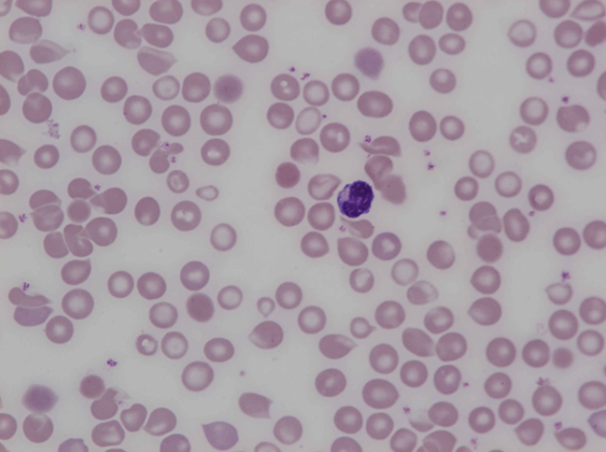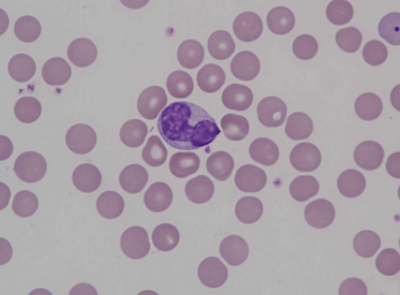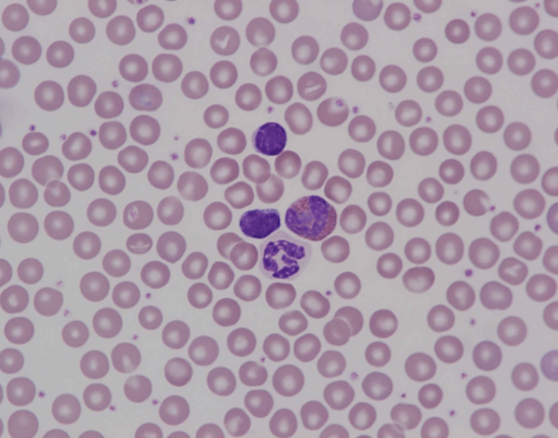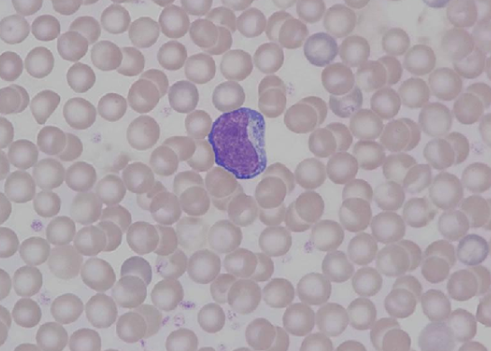Scientific Image Gallery
Welcome to our Scientific Image Gallery. Here you can find real-life examples of cell images, mostly (but not only) from peripheral blood films, that illustrate typical morphologic characteristics pointing to specific conditions or disorders. This constitutes their diagnostic value.
Click on an image to enlarge it and display a short description.
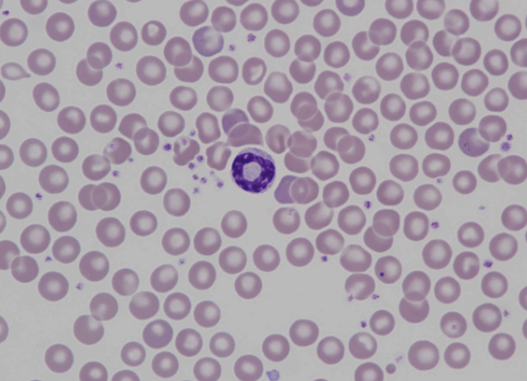
Band neutrophil with ring-shaped nucleus. Band forms are infrequently seen in healthy rodents, but may be observed during inflammation.
<p>Band neutrophil with ring-shaped nucleus. Band forms are infrequently seen in healthy rodents, but may be observed during inflammation.</p>
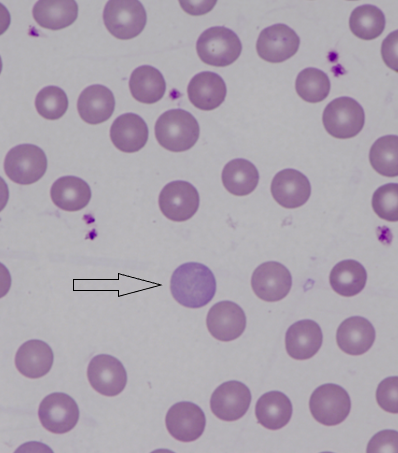
Polychromatic red blood cell (arrow). With immature red blood cells or deficient haemoglobin synthesis the red colour of haemoglobin and the blue staining of RNA become mixed to produce a polychromatic appearance. As the red blood cell matures and its haemoglobin content increases it appears more red.
<p>Polychromatic red blood cell (arrow). With immature red blood cells or deficient haemoglobin synthesis the red colour of haemoglobin and the blue staining of RNA become mixed to produce a polychromatic appearance. As the red blood cell matures and its haemoglobin content increases it appears more red.</p>
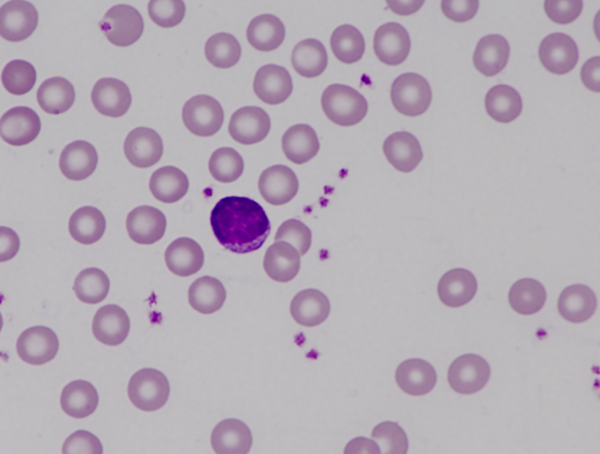
Small lymphocyte with slightly rough chromatin which stains dark purple. Purple azurophilic granules are present in the narrow band of cytoplasm.
<p>Small lymphocyte with slightly rough chromatin which stains dark purple. Purple azurophilic granules are present in the narrow band of cytoplasm. </p>
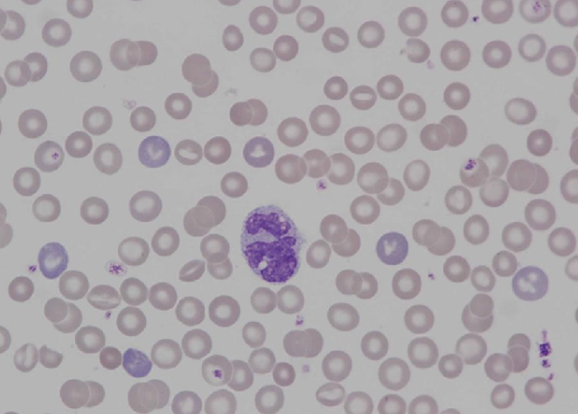
Blood smear of an aged rat (17-month-old) showing a picture of severe anaemia. In the centre, there is a neutrophil showing an atypically shaped nucleus, likely as a result of abnormal cell division.
<p>Blood smear of an aged rat (17-month-old) showing a picture of severe anaemia. In the centre, there is a neutrophil showing an atypically shaped nucleus, likely as a result of abnormal cell division.</p>

